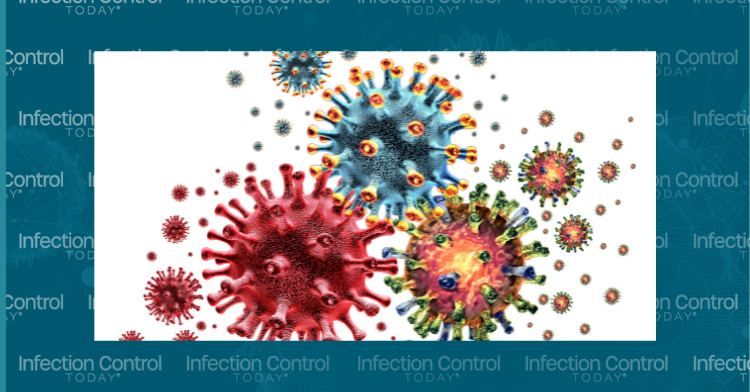Enhanced Infection Prevention Needed in Health Care Facilities Amid Growing Pathogen Threats
Amid escalating multidrug-resistant organism threats, hospitals face business risks and patient trust erosion, necessitating improved cleaning and infection prevention practices.
Pathogens must be eliminated with proper cleaning and infection prevention.
(Adobe Stock unknown)

Health care institutions tend to promote the excellence of their care, the utilization of cutting-edge technologies, and the capabilities of their teams and facilities. But as we turn the page on another year, a new consumer survey and the escalating threat of multidrug-resistant organisms (MDROs) underscore the imperative for health system leaders to begin highlighting their cleaning and disinfection standards to remain ahead of the competition.
Increasingly, these standards are proving to be pivotal drivers of business performance, staff retention, and patient hospital choice—making a hospital’s infection prevention measures and the quality of its cleaning practices a core business risk in 2024.
Pathogens on the Rise
The last few months have proven that SARS-CoV-2 was only 1 of the most recent in an ever-growing number of dangerous pathogens that pose serious risks to humans and our health care support systems.
A seasonal surge in influenza, persistent COVID-19 outbreaks, an elevated number of respiratory syncytial virus cases, and reports of mycoplasma infections have all combined to send people to their family doctors’ offices, hospitals, and urgent care outposts this winter and early spring. These overlapping infections put hospitals under pressure, exposing staff and other patients to contagious diseases.
In addition, health systems are dealing with a growing bench of MDROs that often incubate within their facilities. Communities across the US are trying to tamp down outbreaks of Candida auris, with clinical cases having more than tripled from 757 in 2020 to 2,377 in 2022. Worryingly, a CDC paper found that most C auris transmissions in the US have occurred in long-term health care facilities.
This is partly due to concerns surrounding disinfection compliance, with studies showing that less than 50% of high-touch surfaces in hospitals are adequately cleaned. This lack of thorough cleaning also contributes to a broader range of health care-associated infections (HAIs) that infect millions of patients and lead to billions in direct costs every year.
Impacts to bottom line
These outbreaks and infections not only tax a health system’s ability to adequately care for its patients, but they can also negatively affect its bottom line. This most obviously happens through penalties issued by the Centers for Medicare & Medicaid Services. Paused during the pandemic, the Hospital-Acquired Condition (HAC) Reduction Program encourages hospitals to reduce health care-associated infections (HAIs). It analyzes annual infection rates as Total HAC Scores and then assesses penalties in the form of a 1% reduction in reimbursements for any facility that scores greater than the 75th percentile.
Reinstated in 2022, penalties are now being handed out across the country, providing an important incentive for facilities and health system leaders to prioritize infection prevention measures.
The growing onslaught of public health concerns also weighs on patients and staff, influencing their perceptions of hospital safety. Since the onset of the pandemic, nurses and other staff have routinely shared that personal safety is one issue driving increased turnover rates. And now, a new survey shows that the general population also shares these fears and is willing to avoid facilities over them.
Conducted in late 2023, the study found that 1 in every 2 Americans is concerned about contracting an infection from a hospital. Further, over 75% of those polled say that cleanliness is a factor when choosing a hospital or medical facility for a procedure. These choices are actionable because they are enabled by a growing roster of publicly available resources like Leapfrog and Care Compare that report on infection data.
The message is clear: Hospitals and other medical facilities must improve their infection prevention standards and communicate their levels of effectiveness to staff, patients, and loved ones.
Fast, effective improvements are achievable
One of the first and most effective places to begin is with improved surface cleaning.
Three studies—at Rush University Medical Center, Brigham and Women’s Hospital, and another analyzing results across 8 different hospitals—have all shown that general improvements to cleaning compliance reduced instances of vancomycin-resistant enterococci, Methicillin-resistant Staphylococcus aureus, and Clostridioides difficile infections, respectively, by roughly 50%. One of the key takeaways from all these studies was that they did not require perfect compliance to achieve these results – improvements that boosted compliance rates to approximately 80% or better were enough to make a difference.
The good news is that these programs can be rolled out quickly. Fraser Health, Canada’s second-largest health system, introduced a reimagined infection prevention protocol in late 2022, deploying new technology alongside basic improvements like standardized cleaning carts. Weeks after introducing these updates and with comprehensive staff training, Fraser documented a reduction in outbreaks this past winter season compared to historical ones.
However, fast, meaningful improvement must also be paired with effective communication with the public and staff to ease their concerns. Health system leaders should clarify to marketing and public relations teams that infection prevention standards are a priority message for 2024. Using marketing campaigns, facility signage, local media, internal communications, and training staff to share improvements with patients, facilities can signal the importance of infection prevention and new cleaning programs and their results.
Infection prevention best practices are more than just a check-the-box exercise that hospitals must do to obtain accreditation or pass inspections. They are a proactive commitment that can profoundly impact patient and staff safety. And those patients, staff, CMS, and others are increasingly highlighting the real-world consequences that await those who do not share that commitment.
Ultimately, by creating a culture that values proper cleaning and infection prevention, health system leaders can elevate patient and staff safety and cultivate trust while mitigating a priority business risk to their institutions in 2024 and beyond.